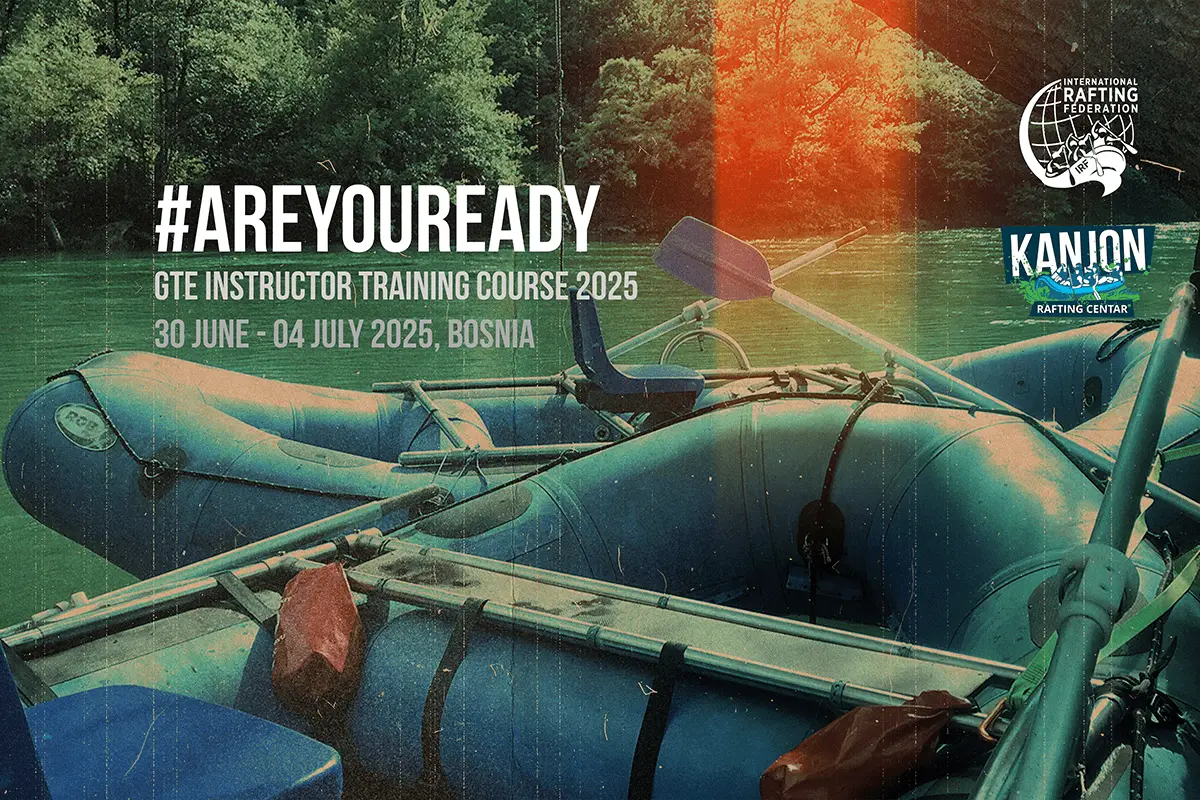By Mark Hirst of Lapin Koskikoulu
 The principle of Smile & the big 3
The principle of Smile & the big 3
During this brief post I wanted to share the tips I use to reduce the chances of my raft customers panicking during a swim.
I am getting on a bit now, I will be 43 this year! I first went kayaking when I was in primary school in my home city of Manchester in the UK. As most school kids one of the first things we were taught is that if we go upside down when the kayak capsizes is “TRY NOT TO PANIC”. Yeah right I know, sit upside down in plastic lunchbox in cold dark water that is around 10 degrees C in an oxygen poor environment wearing nothing more than a thin long john wetsuit with no dry top and try not to panic! Dream on – I don’t have
wide shoulders for that!!
I eventually overcame the urge to panic and as the years passed by I found myself pleading with my guests not to panic when, as a result of my poor guiding skills, I would inevitably flip sending all of my customers for a swim. I am sure many raft guides will agree with me there is the twinge of guilt you feel when you see a customer panicking in the water as a result of a mistake made by yourself.

In 2007 I was lucky to work with a team of exceptional guides in Iceland on a demanding river that has a habit of making people (guides included) panic during a swim. Most of the guides quickly realised that panicking customers is bad for business for the following reasons:
- Panicking creates added stress for all concerned parties, customers and guides, in a potentially stressful environment.
- A panicking customer is not likely to return or become an advocate for your trips.
- In the dawn of TripAdvisor and social media bad reviews are not good for business.
As a team of guides we asked “what can we do to stop our guests from panicking when they swim?”. Step forward Mr Chris from Canada. In a moment of clarity Chris said “Instead of telling the customers what we do not want them to do, lets tell them what we want them to do”. Bingo I thought!
As a team we quickly established that we wanted our customers to remain calm. How can we communicate to our customers that we want them to remain calm when they are about to swim part way down a class 4+ rapid that can potentially give them 10-15 seconds of down time in glacial water?
The general consensus was that the safety talk needed to have the same resounding message mentioned time and time again.
“When you fall out of the raft the first thing we want you to do is to SMILE!!!!”
Chris had managed to convince us that it is physically impossible to panic if you are smiling. Until this day I don’t know if it is true but smiling definitely works for me when it’s all going wrong around me. The principle of smile was born!
We saw results instantly when we encouraged our customers to smile. As we dropped into big rapids you could clearly see that the customers who had listened to the safety talk in detail were actively smiling and enjoying the OBE experience (Out of Boat Experience).
The next development was the “Big 3”. What big three points could we drill home to our guests to really make our clean ups after flips fun and easier?
- SMILE
- HOLD YOUR PADDLE
- FEET UP & GET BACK TO THE RAFT/ SIDE OF THE RIVER/ EDDY
We then started to see that as a team of guides we were pre-briefing the customers before the rapids where we knew that swimming was likely to occur. We found ourselves religiously reminding our customers to smile and do what we told them to do.
I fondly remember loosing a guest out of my raft at the top of a big rapid and taking a long swim. I made a mental note that I would need to do some confidence rebuilding on her return to my boat.
When I got to the bottom of the rapid and we regrouped the swimmer ran back to the raft with a big smile and proudly said “Look I have my paddle and I am smiling that was awesome”. I gingerly smiled and thought Wow!

Take homes
So what messages am I trying to get through to you:
- Try telling your customers to smile and when they take a swim watch the results yourself.
A smile creates a smile
- Focus on telling your customers on the “what to do” instead of the “what not to do”.
- Be proactive if you are at the top of a rapid that historically produces swimmers – quickly remind your customers at the top of the rapid what you want them to do and what to do if they take a swim.
#AreYouReady #RaftersAreAwesome #guide #raft #rafting #raftguide #whitewater #StrongerTogether #internationalrafting #RiverFamily #WeAreIRF
View the original article here.
 The principle of Smile & the big 3
The principle of Smile & the big 3 In 2007 I was lucky to work with a team of exceptional guides in Iceland on a demanding river that has a habit of making people (guides included) panic during a swim. Most of the guides quickly realised that panicking customers is bad for business for the following reasons:
In 2007 I was lucky to work with a team of exceptional guides in Iceland on a demanding river that has a habit of making people (guides included) panic during a swim. Most of the guides quickly realised that panicking customers is bad for business for the following reasons:




